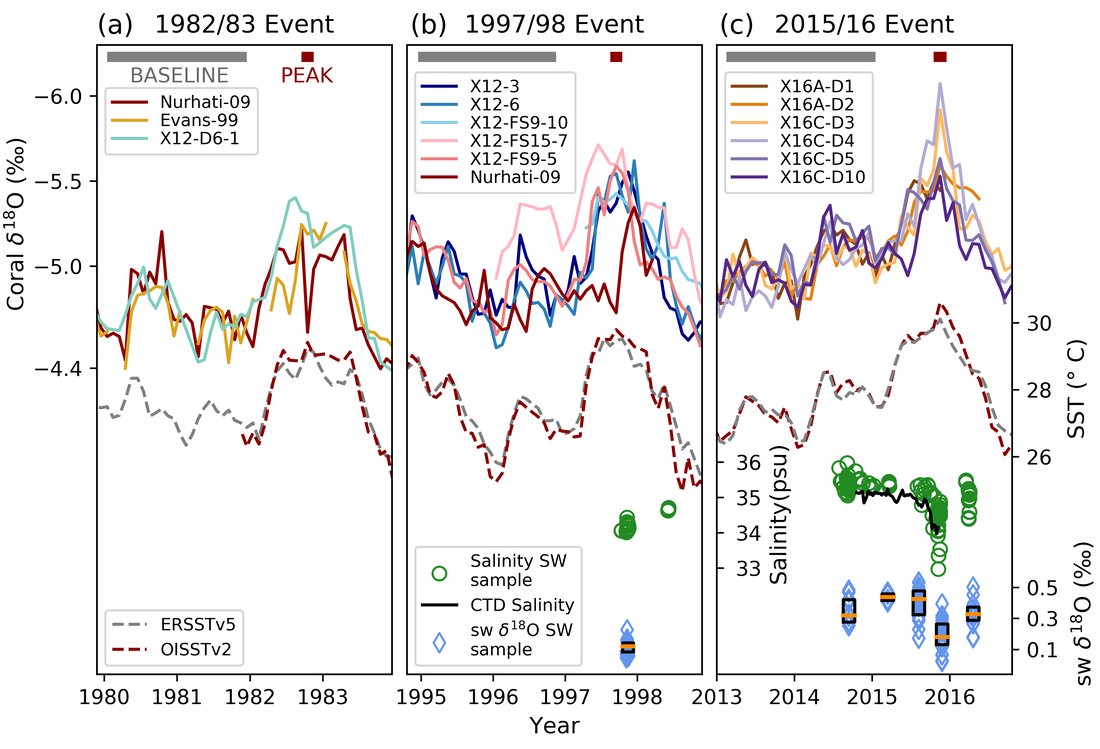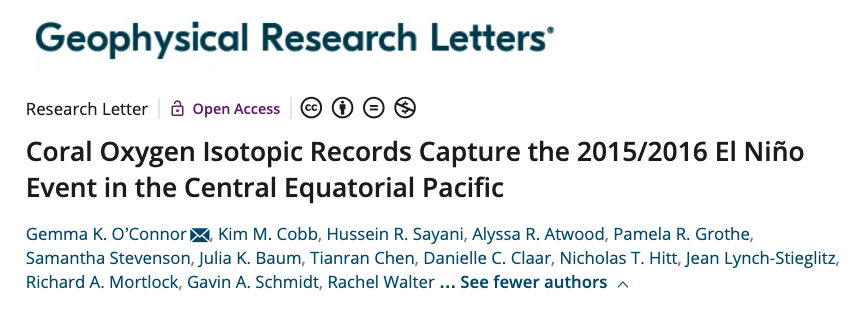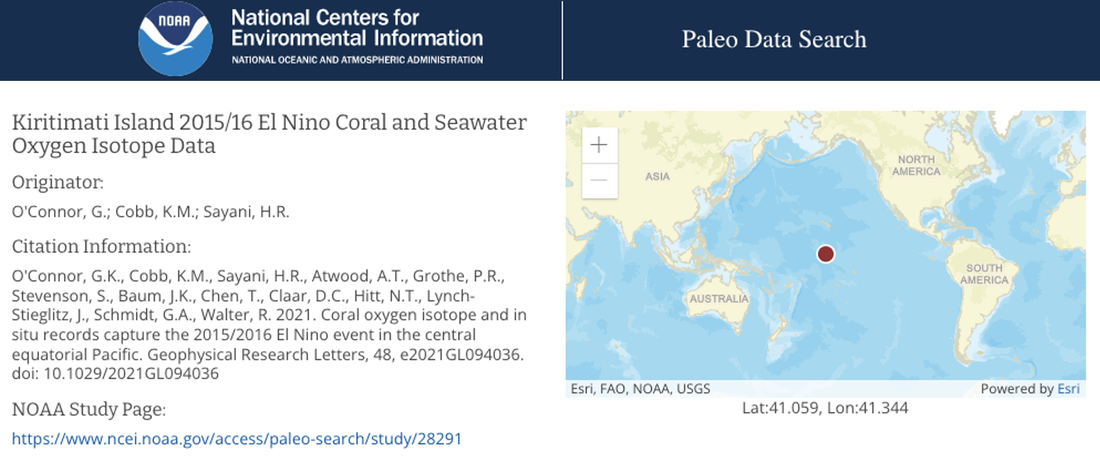Project Summary
Motivation
Coral oxygen isotopes (δ18O) are commonly used to reconstruct past El Niño-Southern Oscillation (ENSO) activity, from the past decades to millennia. However, coral δ18O reflects combined signals from temperature and precipitation, making it difficult to disentangle the two signals. It is also unknown whether corals are capable of recording climatic changes when they are under extreme stress, such as during very strong El Niño events. The very strong 2015/16 El Niño event offered an opportunity to collect the suite of data needed to evaluate these critical uncertainties.
Methods
In O'Connor et al., 2021b, we conduct a calibration study using coral oxygen isotopes and in situ data to evaluate how well corals tracked the very strong 2015/16 El Niño event, and to evaluate how much of the coral signals are from temperature vs precipitation. We collected six short coral cores from the central equatorial Pacific just after the very strong 2015/16 El Niño event to generate the coral δ18O records. We also collected seawater samples throughout various stages of the El Niño, which we analyze for seawater δ18O and salinity. We also analyze in situ temperature data from loggers installed at the coral drill site. With this suite of data, we have the hydrological and temperature components documenting the event, and the corresponding coral records.
Findings
This study was conducted in collaboration with Kim Cobb's lab at Georgia Tech and is published in Geophysical Research Letters (link below).
Coral oxygen isotopes (δ18O) are commonly used to reconstruct past El Niño-Southern Oscillation (ENSO) activity, from the past decades to millennia. However, coral δ18O reflects combined signals from temperature and precipitation, making it difficult to disentangle the two signals. It is also unknown whether corals are capable of recording climatic changes when they are under extreme stress, such as during very strong El Niño events. The very strong 2015/16 El Niño event offered an opportunity to collect the suite of data needed to evaluate these critical uncertainties.
Methods
In O'Connor et al., 2021b, we conduct a calibration study using coral oxygen isotopes and in situ data to evaluate how well corals tracked the very strong 2015/16 El Niño event, and to evaluate how much of the coral signals are from temperature vs precipitation. We collected six short coral cores from the central equatorial Pacific just after the very strong 2015/16 El Niño event to generate the coral δ18O records. We also collected seawater samples throughout various stages of the El Niño, which we analyze for seawater δ18O and salinity. We also analyze in situ temperature data from loggers installed at the coral drill site. With this suite of data, we have the hydrological and temperature components documenting the event, and the corresponding coral records.
Findings
- All six coral δ18O records faithfully documented the 2015/16 El Niño event, demonstrating that coral δ18O is a reliable proxy record even during the largest class of ENSO events.
- We found greater variability in the corals records during the peak of the event, demonstrating the importance of using coral ensembles during large events.
- The coral δ18O records reflect a ~70% contribution from temperature, and 30% from hydrological changes.
This study was conducted in collaboration with Kim Cobb's lab at Georgia Tech and is published in Geophysical Research Letters (link below).
|
Figure 3 from O'Connor et al., 2021b. This shows coral records and climate data available from the 3 strongest El Niño events in the past 50 years. The data we present from the 2015/16 El Niño event is shown in panel (c). The coral records show a depletion in δ18O during the peak of the event; the dashed lines show sea surface temperature, which demonstrates the warming; the scatter plots show data from seawater samples, which show the increased in rainfall.
|
Read O'Connor et al., 2021b in Geophysical Research Letters
Download the coral oxygen isotope records and in situ data from the NOAA Climate Data Center
See photos from our field expedition to Christmas Island in the central tropical Pacific on my Field Work tab.



